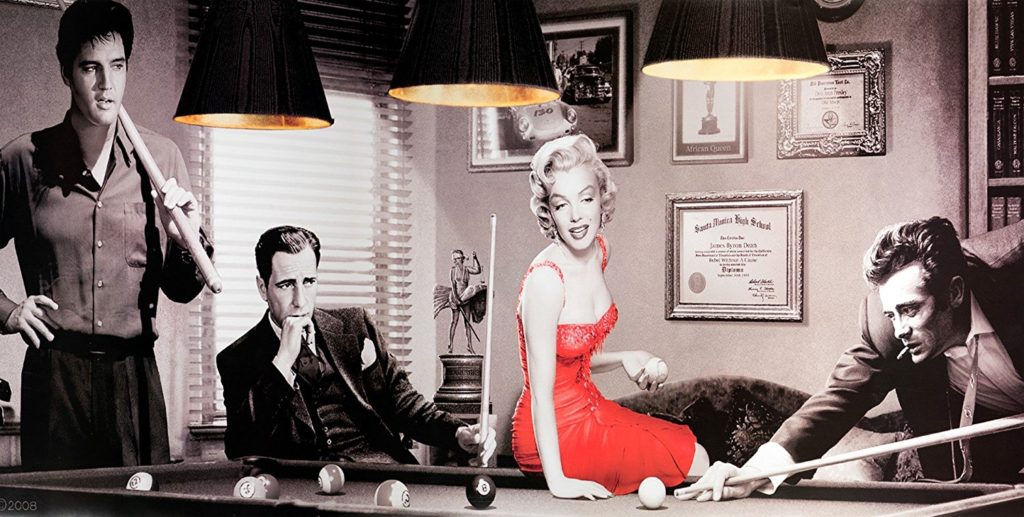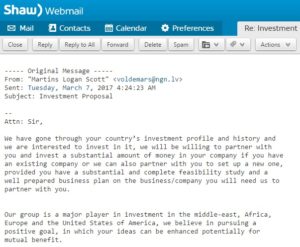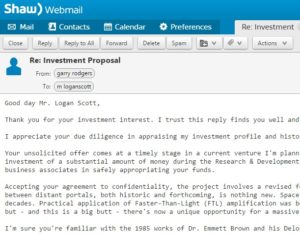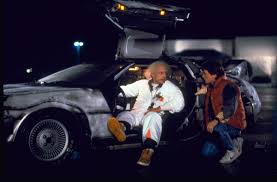 Ever taken an IQ test? If you did, you probably marked around 100. That’s the average where over 80 percent of all people fall in. Maybe you scored higher—say 140. That’d put you in the top 2 percent where Mensa members like Stephen Hawking resided. Or, you could be down in the 80s which some consider slow. But don’t feel bad if you’re sub-100 because Steve Jobs got an 86 and he made out just fine.
Ever taken an IQ test? If you did, you probably marked around 100. That’s the average where over 80 percent of all people fall in. Maybe you scored higher—say 140. That’d put you in the top 2 percent where Mensa members like Stephen Hawking resided. Or, you could be down in the 80s which some consider slow. But don’t feel bad if you’re sub-100 because Steve Jobs got an 86 and he made out just fine.
IQ stands for Intelligence Quotient. That’s an arbitrary scale where mental cognitive functions are examined and given a numeric value. How valid is it? Well, there are divided opinions on IQ meanings. Some brilliant savants need velcro for shoelaces while Muhammad Ali, who scaled 76, handed out exceptional jabs of wisdom never mind dealing knock-out blow interviews.
 If you’ve never taken an IQ test, here’s your chance to do one online. There are lots of sites available. Some are credible. Some are not. One belongs to Mensa and that worldwide organization for the gifted is considered the leading authority for rating and linking people with exceptionally high IQs. Their acceptance mark is 132. It has to be verified under proctored conditions. But, then, Mensa membership has its perks.
If you’ve never taken an IQ test, here’s your chance to do one online. There are lots of sites available. Some are credible. Some are not. One belongs to Mensa and that worldwide organization for the gifted is considered the leading authority for rating and linking people with exceptionally high IQs. Their acceptance mark is 132. It has to be verified under proctored conditions. But, then, Mensa membership has its perks.
Can you make the Mensa club? You just might. But, first, let’s look at what science says about intelligence, where it comes from and where it’s going—especially artificial intelligence or AI. We’ll see how intelligence is classified as well as investigate human traits more important than book smarts. It’s interesting to know some famous people’s IQs and who are the top 5 of all time. We’ll sample a Mensa exam and give you the opportunity to test drive one. Then we’ll check how I made out qualifying for Mensa.
 True intelligence is tough to define. It’s subjective and objective at the same time. That makes defining intelligence controversial. Possibly the best analogy comes from Albert Einstein who said, “The true sign of intelligence is not knowledge but imagination.” Einstein never took an IQ test and he’s estimated to have ranked pretty high mentally. Practicality was a different story. He theorized relativity and the space-time continuum but couldn’t balance his checkbook. Socrates also had a go at defining intelligence. “I know that I am intelligent because I know nothing,” the great philosopher said. Then Socrates dismissed the brain as being part of the body’s cooling system and concluded intelligence came from the heart.
True intelligence is tough to define. It’s subjective and objective at the same time. That makes defining intelligence controversial. Possibly the best analogy comes from Albert Einstein who said, “The true sign of intelligence is not knowledge but imagination.” Einstein never took an IQ test and he’s estimated to have ranked pretty high mentally. Practicality was a different story. He theorized relativity and the space-time continuum but couldn’t balance his checkbook. Socrates also had a go at defining intelligence. “I know that I am intelligent because I know nothing,” the great philosopher said. Then Socrates dismissed the brain as being part of the body’s cooling system and concluded intelligence came from the heart.
The word “intelligence” comes from the Latin verb “intelligere” which means to comprehend or perceive. This developed into the Greek “intellectus” or “understanding” and the phrase “intellectus intelligit” that translates to “understanding understanding”. This play-on-words describes a general mental capacity involving the ability to reason, plan, solve problems, think in abstract, comprehend complex ideas, communicate and learn from experience. It’s more than book learning, academic skill or test-taking smarts. Intelligence is the ability to make sense of things, catch on quick and figure out what to do.
There are many theories of intelligence. They come from scientific disciplines like neurology and psychiatry. They flow from philosophers and learned scholars in education. Even religious groups take a crack at rating intelligence. Regardless of where opinions come from, two main forms of human intelligence are universally recognized.
- Crystallized intelligence encompasses factual knowledge gained through education and life experiences.
- Fluid intelligence is the ability to process information, make logical decisions and inhibit irrational emotional impulses.

Two main theories around intelligence are attributed to Howard Gardner and Robert Sternberg. Gardner, a Harvard professor, itemized seven specific components of intelligence—musical, bodily-kinesthetic, logical-mathematical, linguistic, spatial, interpersonal and intrapersonal. The idea behind his theory explains why some people are better than others at skills like numbers, words and relationships. Sternberg disagreed. He broke intelligence into three groups—analytical, creative and practical. Those are abilities to solve problems, deal with new situations and adapt to changing environments.
 Charles Spearman hypothesized that one factor generally framed intelligence. He called it the “g-factor” and postulated all people are basically the same—only some are better at things than others. I’m not sure I follow that simple reasoning and tend to agree with mainstream theories of intelligence being divided into distinct categories. It seems some people are clearly at ease with particular intellectual domains and there’s no single factor explaining performance across a wide range of intelligent abilities.
Charles Spearman hypothesized that one factor generally framed intelligence. He called it the “g-factor” and postulated all people are basically the same—only some are better at things than others. I’m not sure I follow that simple reasoning and tend to agree with mainstream theories of intelligence being divided into distinct categories. It seems some people are clearly at ease with particular intellectual domains and there’s no single factor explaining performance across a wide range of intelligent abilities.
Anatomy and neuroscience have taken a good, hard look at what constitutes intelligence. They see it developing as electro-chemical signals being transported through interconnected neuron circuits. Basic brain structure monitored by functional magnetic resonance imaging (fMRI) shows most “intelligent” interactions occur in the frontal or parietal region and are centered in the anterior cingulate cortex. This is called the Parietal-Frontal Integration (PTI) theory and it’s supported by scientific evidence.

There’s one problem with the PTI theory. It can’t account for consciousness. Without consciousness, there’s no intelligent operation in the brain and science doesn’t have the remotest grasp on the nature or origin of consciousness. Consciousness is suspected to be the Grand Unified Theory (GUT) that unites the basic known physical properties of space-time and energy-mass into one single explanation of the universe. At the center of the GUT is the source of intelligent consciousness and God only knows where that came from. But that’s another discussion.
Over centuries, educators recognized various students have various cognitive abilities. At the turn of the nineteenth/twentieth centuries, German psychologist Wilhelm Stern was tasked by a government public school commission to devise a way for detecting children with significantly below-average intelligence and mental retardation. The idea was to economically group these kids into Special-Ed classes rather than lock them inside expensive asylums.
 In 1905, Alfred Binet developed a scoring system for the intelligent quotient Stern was looking for. Binet used a ratio of mental ability to chronological age and based it on a point system with 100 being average. Anything below 100 was classified in retarded degrees and anything above was considered advanced. It was like ignition timing on an internal combustion engine. Lewis Terman at Stanford University in the United States realized Binet was on to something so Terman fine-tuned the IQ test into what’s known as the Stanford-Binet Intelligence Scale. It’s still in use today as the industry standard.
In 1905, Alfred Binet developed a scoring system for the intelligent quotient Stern was looking for. Binet used a ratio of mental ability to chronological age and based it on a point system with 100 being average. Anything below 100 was classified in retarded degrees and anything above was considered advanced. It was like ignition timing on an internal combustion engine. Lewis Terman at Stanford University in the United States realized Binet was on to something so Terman fine-tuned the IQ test into what’s known as the Stanford-Binet Intelligence Scale. It’s still in use today as the industry standard.
The Stanford-Binet 5th Edition IQ Range Classification goes like this:
- 160+ — Brilliant
- 145-159 — Very gifted or highly advanced
- 130-144 — Gifted or advanced
- 120-129 — Superior
- 110-119 — High average
- 90-109 — Average
- 80-89 — Low average
- 70-79 — Borderline impaired or delayed
- 55-69 — Mildly impaired or delayed
- 40-54 — Moderately impaired or delayed
- 39- — Not classified
When the Stanford-Binet IQ Test was first used, there were official classifications for people who scored low. The terms “moron”, “imbicile” and “idiot” were dropped in recent years out of correctness but we all know buzz words for smart and dumb people. Today, “switched-on” and “switched-off” are part of the Urban Dictionary. So are “privileged”, “backward”, “enlightened”, “dimly-lit”, “high-brow” and “half-wit”. We’re not allowed to say “retard” like I was teased as a kid. It’s now replaced with “mentally-challenged” which I’m not. My mother had me tested.
 So the logical question is, “How did human intelligence develop to the point I’m at today?” Anthropologists agree homo sapiens jumped down from the primate tree around 2 million years ago and made a huge mental leap forward when they learned to cook food. That took intelligence in harnessing fire just as it took intelligence to invent simple machines like the wheel and axle, the screw, the pulley and the inclined plane. Despite what creationists say about evolution, the evidence is empirical that our brains progressively evolved over hundreds of thousands of years to expand a field called intelligence. Genetics, diet and social interaction played a big part.
So the logical question is, “How did human intelligence develop to the point I’m at today?” Anthropologists agree homo sapiens jumped down from the primate tree around 2 million years ago and made a huge mental leap forward when they learned to cook food. That took intelligence in harnessing fire just as it took intelligence to invent simple machines like the wheel and axle, the screw, the pulley and the inclined plane. Despite what creationists say about evolution, the evidence is empirical that our brains progressively evolved over hundreds of thousands of years to expand a field called intelligence. Genetics, diet and social interaction played a big part.
Discoveries and inventions made life easier. They gave humans more time to refine arts, literature and sport. Devices evolved into complex machines like smart cars and computerized guidance. Our evolution has arrived at the point where intelligent machines are in daily use and moving forward fast. We’re at the threshold of implementing Practopoiesis. That’s the conceptual bridge between biology and artificial intelligence. AI is here and it’s a matter of time before computerized brain implants are real.
That might be good and that might be bad for the human species. We’ve always struggled between haves and have-nots. Social advancement intrinsically links to out-thinking a competitor but societies have a way of balancing fairness in weak vs. strong. We’re able to see a line between naturally knowing and not being able to know.

It’s important to know IQ testing is not meant to identify character or personality traits. It’s strictly a ranking of intelligence to form a baseline for comparison. But the Stanford-Binet equation is recognized as a valid and useful measure for psychological and legal purposes. It forms part of a criminal defense strategy to establish mental culpability and the United States Supreme Court established anyone with a score of 70 or less is exempt from the death penalty.
 Before we look at how your IQ Test is structured and where you’ll mark, let’s see who’s been tested and how they rated. Many famous and infamous people have their IQs recorded and psychologists have speculated about where historical figures stood. We’ll break the categories down into science/invention, politics/military and arts/entertainment.
Before we look at how your IQ Test is structured and where you’ll mark, let’s see who’s been tested and how they rated. Many famous and infamous people have their IQs recorded and psychologists have speculated about where historical figures stood. We’ll break the categories down into science/invention, politics/military and arts/entertainment.
Science/Invention
- Albert Einstein — Swiss physicist — 160
- Albrecht von Haller — Swiss medical scientist — 190
- Benjamin Franklin — American inventor — 160
- Bill Gates — American inventor/businessman — 160
- Blaise Pascal— French philosopher — 195
- Charles Darwin — English botanist — 165
- Edith Stern — American computer engineer — 198
- Francis Crick — British discoverer of DNA — 134
- Henry Ford — American automaker — 125
- Immanuel Kant — German philosopher — 175
- Isaac Newton — English scientist — 190
- Leonardo da Vinci — Italian inventor/artist — 190
- Marie Curie — French chemist — 185
- Paul Allen — Microsoft co-founder — 168
- Ruth Lawrence — British Mathematician — 175
- Stephen Hawking — British theoretical physicist — 160
Politics/Military
- Abraham Lincoln — US President — 140
- Adolf Hitler — Nazi leader — 141
- Andrew Jackson — US President — 120
- Angela Merkel — German Chancellor — 136
- Benjamin Netanyahu — Israeli Prime Minister — 182
- Bill Clinton — US President — 137
- Barak Obama — US President — 130
- Boris Johnson — British politician — 79
- Donald Trump — US President — 156
- George Armstrong Custer — US Cavalry leader — 80
- George W. Bush — US President — 125
- George S. Patton — American WW2 general — 151
- Hillary Clinton — American politician — 143
- John F. Kennedy — US President — 117
- Margaret Thatcher — British Prime Minister — 176
- Ronald Raegan — US President — 103
- Ulysses S. Grant — US Civil War general/US President — 110
- Vladimir Putin — Russian President — 130
Arts/Entertainment
- Andy Warhol — American painter — 86
- Arnold Schwarzenegger — American actor/politician — 135
- Asia Carrera — International adult film star — 156
- Bobby Fischer — American chess master — 187
- Brittany Spears — American singer — 104
- Charles Dickens — British writer — 180
- Cindy Crawford — American model — 154
- Conan O’Brien — American television host — 160
- Geena Davis — American actor — 140
- James Woods — American actor — 180
- Jodie Foster — American actor — 132
- John Travolta — American actor — 90
- Lisa Kudrow —American actor — 161
- Madonna — British entertainer — 141
- Mayim Bialik — “Amy Farrah-Fowler” on Big Bang Theory — 163
- Nicole Kidman — Australian actor — 132
- Paris Hilton — American celebrity — 120
- Quinton Tarantino — American movie director — 165
- Robin Williams — American actor/comic — 142
- Rowan Atkinson (Mr. Bean) — British actor — 178
- Tina Fey — American entertainer — 143
- Tom Cruise — American actor — 94
- Vincent van Gogh — Dutch painter — 150+
That’s a pretty diverse and well-known crowd but they’re not the smartest— at least not as recorded IQ goes. That mark of distinction goes to these five.
- Marilyn vos Savant holds the Guinness Book of Records as the smartest woman alive. She’s best known for her high score but is an accomplished author and advice columnist. Ms. vos Savant repeatedly broke the 200 mark in IQ tests.
- Kim Ung-Yong is a Korean child prodigy. By the time he was three, Kim was fluent in five languages and could read and write all. He became a NASA engineer but returned home where he quietly teaches university classes. Kim has an IQ of 210.
- Christopher Hirata is an astrophysicist at the California Institute of Technology where he began professing at 14. He won the Physics Olympiad gold medal at 13 and scored 225 on his IQ exam.
- Terrance Tao is a Chinese genius who teaches advanced mathematics at the University of California. He’s won every math prize there is. It’s probably due to his IQ being 232.
- William James Sidis is no longer alive but has the distinction of the highest human IQ score ever recorded. There are discrepancies in test methods but it’s generally accepted he pushed close to 300. Sidis was an oddball and actually quite unstable. He attended Harvard at age 11 as a math student and went on to learn over 40 languages. His political activism got Sidis jailed and he died young. It was a cerebral aneurysm. Literally, his brain exploded.
These smart folks come from diversified backgrounds and have equally diverse personalities. They’re different, yet alike. Psychologists have found six characteristics that high-functioning people have in common, regardless of their IQ level.
- They’re highly adaptable
- They know what they don’t know
- They’re intensely curious
- They ask good questions
- They’re sensitive to other people
- They’re open-minded and critical of their own work
So that’s a wrap of how some scored on their IQ tests and how they operate. Now—how about yours? I’ve lined up a Mensa website where you can try your intelligence but, to practice, here are sample questions for helping you prepare.

Pear is to apple as potato is to?
- Banana
- Radish
- Strawberry
- Peach
- Lettuce
There are 1200 elephants in a herd. Some have pink and green stripes. Some are all pink. Some are all blue. One-third are all pure pink. Is it true that 400 elephants are definitely blue?
If it were two hours later, it would be half as long until midnight as it would be if it were an hour later. What time is it now?
- 18:30
- 20:00
- 21:00
- 22:00
- 23:30

What same three-letter word can be placed in front of these words to make a new word?
SIGN, DONE, FOUND, DENSE, FIRM, TRACT, DUCT
“If some Smaugs are Thors and some Thors are Thrains, then some Smaugs are definitely Thrains.” This statement is:
The price of an article was cut 20% for a sale. By what percent must the item be increased to again sell it at the original price?

Which one of the five is least like the others?
- Ham
- Liver
- Salmon
- Pork
- Beef
If you count from 1 to 100, how many 7s will you pass on the way?
Sally likes 225 but not 224; she likes 900 but not 800; she likes 144 but not 145. Which does she like?
Jack is taller than Peter and Bill is shorter than Jack. Which of the following statements is the most accurate?
- Bill is taller than Peter
- Bill is shorter than Peter
- Bill is as tall as Peter
- It is impossible to tell
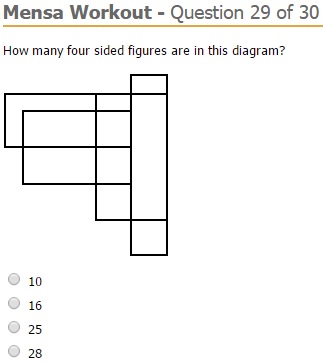
What is this word when unscrambled?
H C P R A A T E U
Which of the five designs is least like the other four?
Find the missing number:
0,1,1,2,3,5,8,13,—,34,55
John received $.41 in change from a purchase at the drugstore. If he received six coins, three of the coins had to be:
- Pennies
- Nickels
- Dimes
- Quarters
- Half-dollars
Only one other word in the English language can be made using all the letters from the word INSATIABLE. Can you find it?
If FP = 10 and HX = 16, what does DS = ?
What letter appears next in this sequence? B-V-C-X
Cattell III B has 158 questions. Cattell IV A has 317 questions. Which one is more difficult?
“A fish has a head 9” long. The tail is equal to the size of the head plus one-half the size of the body. The body is the same size as the head plus the tail.” How long is the fish?
I tried 60 of these Mensa test questions and was allowed 20 minutes. After that, the process timed out. That’s 20 seconds per question. It doesn’t give much room for calculating, googling or phoning a friend. I’ll admit I guessed on some — especially the fish.
It’s not my first go-around on an IQ test but was my first try with Mensa. Back in high school, we were given IQ tests as some sort of socialist experiment. We were never shown scores so I don’t know my outcome. I was never a shining light in grade school but was smart enough to slide through by friending the smart kid.
 I sat beside Terry Blaney (we called him Terry Brainey) and I glanced across as Terry whizzed through our IQ test. I checked off what I saw him do then guessed the rest. My bet is Terry’s IQ hits 140 or better. He went on to get an engineering degree and I became a cop. I never kept in touch with Terry but you can’t hide on the internet. So I found him on Linked-In and see he retired as a VP with Shell Oil. Now Terry runs his private petroleum consulting business in Shanghai and I’m a wanna-be crime writer doing blog posts like this.
I sat beside Terry Blaney (we called him Terry Brainey) and I glanced across as Terry whizzed through our IQ test. I checked off what I saw him do then guessed the rest. My bet is Terry’s IQ hits 140 or better. He went on to get an engineering degree and I became a cop. I never kept in touch with Terry but you can’t hide on the internet. So I found him on Linked-In and see he retired as a VP with Shell Oil. Now Terry runs his private petroleum consulting business in Shanghai and I’m a wanna-be crime writer doing blog posts like this.
Which brings to my own intelligence and also to yours. Over the years, I’ve slid a lot further on bullshit than on gravel. And my experience firmly proves that bullshit baffles brains. But I know it’s hard to BS the computerized Mensa format so I gave it an honest go. Here’s the link if you’d like to try it: https://www.mensaiqtest.net/
I did the best I could with 60 questions within 20 minutes. Man, that was a challenge. Some were easy. Some took a pen & paper. Some were pure guess and some were gut feel. But all required an application of intelligence no matter how you approached. Then I hit the calculate button and got this:

The bastards wanted 19.92 Euro to release my score. That’s over 20 bucks US—25 up here in Canada. They accept Visa, Mastercard and other forms of payment but I hit the escape button and left.
I guess that’s the mark of intelligence.
 Ordinary people have a sun dance fascination with famous folks. They worship bright lights but rarely waltz with military heroes and historical figures. Same with movie stars like Sundance’s Robert Redford. Sports jocks are honored. Some politicians are revered. So are daredevils. Religious and spiritual leaders. Business successes. Inventors. Philanthropists. Chauvenistic cooks and reality TV show hosts. Even the odd crime writer has their day of fame and following. Some people are famous for being famous like the Kardashian Klan but most in the spotlight have earned it. Some are good folks. And some are disastrous. Like those in the fatal sun dance between Sitting Bull and Custer with his men of the United States 7th Cavalry.
Ordinary people have a sun dance fascination with famous folks. They worship bright lights but rarely waltz with military heroes and historical figures. Same with movie stars like Sundance’s Robert Redford. Sports jocks are honored. Some politicians are revered. So are daredevils. Religious and spiritual leaders. Business successes. Inventors. Philanthropists. Chauvenistic cooks and reality TV show hosts. Even the odd crime writer has their day of fame and following. Some people are famous for being famous like the Kardashian Klan but most in the spotlight have earned it. Some are good folks. And some are disastrous. Like those in the fatal sun dance between Sitting Bull and Custer with his men of the United States 7th Cavalry.  There’s an untold story about Custer and his death at the last stand. It’s about the American Indian Sun Dance and how the immense psychological impact on native warriors was the root cause of Why Custer Really Lost The Battle of the Little Bighorn.
There’s an untold story about Custer and his death at the last stand. It’s about the American Indian Sun Dance and how the immense psychological impact on native warriors was the root cause of Why Custer Really Lost The Battle of the Little Bighorn. The fight changed because of a complex and universal mindset the Sioux and Cheyenne soldiers had. Their Cavalry opponents had no concept of it. That’s the mental clarity and collective consciousness a determined human force has when psychologically prepared and dedicated to a greater purpose. Sitting Bull’s leadership through Sun Dance ceremonies properly prepped his men. They broke their opponent’s will to fight and supercharged their own. That’s Why Custer Really Lost the Battle of the Little Bighorn.
The fight changed because of a complex and universal mindset the Sioux and Cheyenne soldiers had. Their Cavalry opponents had no concept of it. That’s the mental clarity and collective consciousness a determined human force has when psychologically prepared and dedicated to a greater purpose. Sitting Bull’s leadership through Sun Dance ceremonies properly prepped his men. They broke their opponent’s will to fight and supercharged their own. That’s Why Custer Really Lost the Battle of the Little Bighorn.

